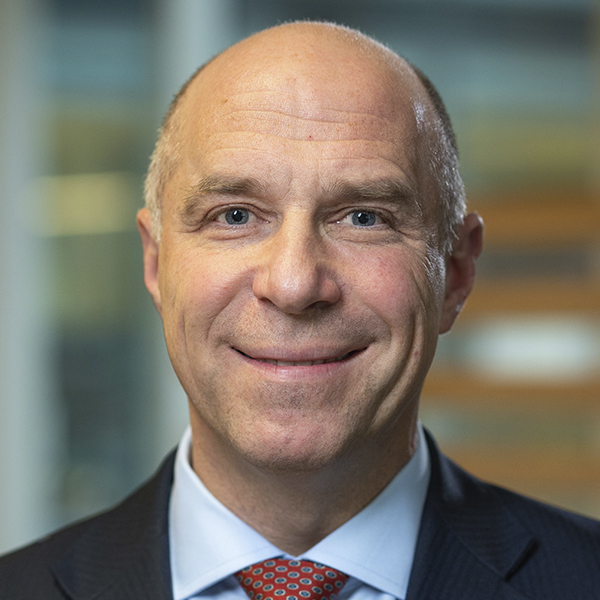Capital IdeasTM
Investment insights from Capital Group
Fixed Income
- The US high-yield market appears healthier and more stable than it has been in many years.
- Solid economic fundamentals should keep default rates relatively low.
- Given recent yields of more than 8%, the risk of rising rates is mitigated by the high yield and coupons.
High yield is finally deserving of its name again. The high-single-digit yields that the sector is offering are renewing investor interest in this asset class, even as the spectre of a recession raises some concerns. We do not believe in timing this market.
History shows that when yields rise to the high-single-digit range, they tend not to stay that elevated for very long, as the discounted price and higher yields tend to draw in a broader cross section of investors. The carry (interest earned) that the high coupon provides also helps mitigate the risk of return volatility.
High-yield investors also benefit from cash flows arising from calls and tenders. This creates an ability to redeploy that cash in opportunities at potentially higher yields.
We discuss here five factors that make the case for investing in US high yield and how we are approaching this market in a period of economic uncertainty, as well as when macro factors are having a large influence on markets.
There is no doubt that we are in an uncertain economic environment. We could also be in a recession that is in large part the result of the US Federal Reserve (Fed)’s aggressive stance on fighting inflation. As expected, the Fed raised interest rates by 75 basis points (bps) at its September meeting. But how soft or shallow will the recession be?
If the Fed’s actions are not successful in bringing down inflation, or if they push the economy into a longer, deeper recession, the high-yield market — and credit and risk assets more broadly — could face a bumpy ride.
One could argue that the negative scenario is reflected in prices already, given that returns for most areas of fixed income were in the negative high single digits through the end of August this year. On the other hand, if the Fed manages a “softer landing,” high-yield bonds could rally. Thus, it may make sense for investors to consider building exposure to high yield. We believe several areas of the market could be resilient. In this environment, our focus is on quality.
1. Stronger fundamentals and lower issuance support valuations
Even with a softer macroeconomic backdrop, the US high-yield market appears healthier and more stable than it has been in many years. We have a weaker economic environment but a stronger asset class, and the combination has resulted in yield spreads of around 480 bps that are in line with historical averages, bringing the yield-to-worst on the benchmark Bloomberg US Corporate High Yield 2% Issuer Capped Index to 8.4% as at the end of August.
High-yield spreads and yields are in line with their long-term averages
.png)
Data as at 31 August 2022. OAS: option adjusted spread, YTW: yield-to-worst. Source: Bloomberg
A second positive factor is the absence of near-term large-scale refinancing requirements. Savvy corporate management teams have tapped into the low-rate and favourable credit environment of the past few years to complete their financing requirements. Especially in 2021, companies were able to refinance their near-term debt at exceptionally low yields and push maturities out by several years.
As a result, corporate borrowers have entered this period of rising rates with financing that has been locked in for a few years. Because of that, many can sit on the sidelines today and do not need to issue new debt at prevailing higher rates. Many companies don’t need to tap capital markets or refinance until 2025, so the volume of issuance could remain low for at least another year, unless rates fall or high-yield spreads tighten.
Year-to-date through August, there has been about US$92 billion in high-yield issuance, compared to approximately US$366 billion for the same period last year.1 So, the opportunity set for us has shifted to the secondary market, where we are looking at relative value across capital structures and between issuers in the same industry, or even between industries.
We are concerned about the lower-rated segment of high-yield companies that were waiting for their own prospects to improve before refinancing their debt. These firms may have missed the window to capture the lowest rates. While they represent a small segment of the high-yield market today, they also present us with opportunities to find solid companies seeking fresh capital that will now have to come with higher coupons.
Many borrowers have time to refinance and are sitting on the sidelines
.png)
Data as at 30 June 2022. Illustrates dollar volume of high yield bonds maturing in calendar years 2022 through 2030. Source: Bloomberg
2. Default rates are likely to remain low
Also supporting the high-yield asset class are solid economic fundamentals, which should keep default rates relatively low. At less than 1%, the latest 12 months’ default rate is very low by historical standards. When we evaluate future default probabilities, we consider the amount of bonds that are trading at distressed levels, because this can be an early indicator of future defaults. Today, distressed debt as a percentage of the high-yield universe is in the mid-single digits. Based on this metric, while we do expect the default rate to rise from very low levels, we do not expect a spike in defaults.
Another factor that we consider is the universe of high-yield debt that is rated triple-C or below. This too, is around historical lows at about 12% of the high-yield market, compared to 20% in December 20072 , prior to the recession following the global financial crisis. So, when we combine these three parameters — historically low default rates around 1%, triple-C and below-rated securities at about 12% of the market, and distressed debt stock in the mid-single digits as a percentage of the universe — it presents an overall supportive credit picture for the high-yield market.
High-yield default rates are near historic lows
.png)
Data as at 31 July 2022. Trailing 12-month results. Source: JPMorgan
1. Data as at 31 August 2022. Source: Refinitiv
2. Data as at 31 August 2022. Source: FAMIS
Risk factors you should consider before investing:
- This material is not intended to provide investment advice or be considered a personal recommendation.
- The value of investments and income from them can go down as well as up and you may lose some or all of your initial investment.
- Past results are not a guide to future results.
- If the currency in which you invest strengthens against the currency in which the underlying investments of the fund are made, the value of your investment will decrease. Currency hedging seeks to limit this, but there is no guarantee that hedging will be totally successful.
- Risks may be associated with investing in fixed income, emerging markets and/or high-yield securities; emerging markets are volatile and may suffer from liquidity problems.
Our latest insights
-
-
European Equity
-
Economic Indicators
-
-
RELATED INSIGHTS
-
European Equity
-
-
Portfolio Construction
Past results are not predictive of results in future periods. It is not possible to invest directly in an index, which is unmanaged. The value of investments and income from them can go down as well as up and you may lose some or all of your initial investment. This information is not intended to provide investment, tax or other advice, or to be a solicitation to buy or sell any securities.
Statements attributed to an individual represent the opinions of that individual as of the date published and do not necessarily reflect the opinions of Capital Group or its affiliates. All information is as at the date indicated unless otherwise stated. Some information may have been obtained from third parties, and as such the reliability of that information is not guaranteed.
Capital Group manages equity assets through three investment groups. These groups make investment and proxy voting decisions independently. Fixed income investment professionals provide fixed income research and investment management across the Capital organisation; however, for securities with equity characteristics, they act solely on behalf of one of the three equity investment groups.
 Shannon Ward
Shannon Ward
 Peter Becker
Peter Becker
 Flavio Carpenzano
Flavio Carpenzano